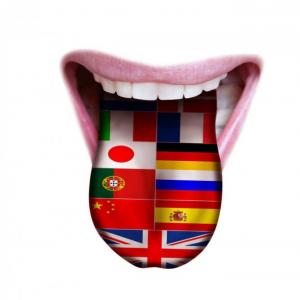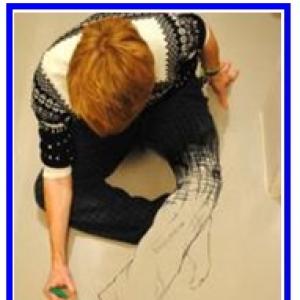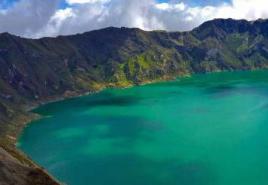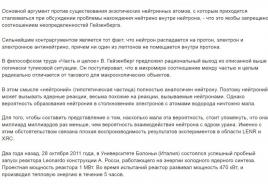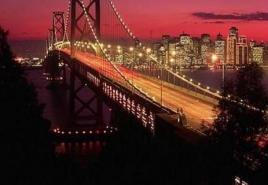Lomonosov Viktor Sadovnichy: biography, activities and interesting facts. Rector of Moscow State University
It was originally located on the site of the current State Historical Museum on Red Square.
History of University
The greatest Russian scientist Mikhail Lomonosov took on the role of the driving force. Mikhail Vasilyevich conceived an ambitious project of creating a university for gifted students. However, it turned out to be difficult to implement the idea: officials invariably responded with a polite refusal to his proposal. In the end, Lomonosov had to use a cunning "roundabout maneuver": he handed over the project and the charter of the university to the favorite of Empress Elizabeth Petrovna - Ivan Ivanovich Shuvalov. An influential courtier, thin and smart man, Shuvalov was looking for the glory of a philanthropist and was able to achieve Senate approval of the charter of a new educational institution proposed by Lomonosov. On January 25, 1755, a decree on the creation of the Imperial Moscow University was signed by Empress Elizabeth (by the way, this is where the student tradition originates - to celebrate Tatiana's day).
Initially, the university was located in the Pharmaceutical House at the Resurrection Gate on Red Square (now there is Historical Museum). There were three faculties: philosophy, medicine and law. Partly due to the fact that Lomonosov himself was a nugget "from the bottom", the educational institution pursued a very democratic policy: they accepted everyone except serfs, provided that the person passed the necessary entrance tests... Lectures were given by the best professors, often the classes attracted a huge audience, since everyone could come to the lectures. Such a democratic policy soon led to a significant development of the educational institution. In the 19th century, the number of faculties is growing; more than 1000 students study within the walls of the university in the middle of the century.
The building of the university quickly becomes cramped, and for classes they rent, and then buy out the courtyard of Prince Repnin on Mokhovaya Street, then six more manor estates. In 1785, Catherine II released 125 thousand rubles from the treasury for the construction of a university building designed by the architect Matvey Kazakov. Alas, the very first building did not reach us: a fire in September 1812 destroyed it along with a museum, library, art and scientific values. But five years later, they began to restore the charred skeleton, funds for the construction were collected by the whole world. The reconstruction work was completed in 1819 under the direction of the architect Dementy Gilardi. The solemn and elegant building took on the familiar majestic appearance, and classes began there.
According to the recollections of contemporaries, studying at the Imperial Moscow University was both difficult and interesting. Lectures began at nine in the morning, there were seven pairs on the schedule. The faculties were not as clearly delineated as they are now - it was possible to attend classes of renowned professors in various specialties. For the course of study, it was necessary to pay 28 rubles 57 kopecks in bank notes, but this did not apply to low-income talented students: scholarships still existed for them, as well as compensation for renting a room. In addition, a bonus system was introduced, and for excellent studies it was possible to receive up to 300 rubles, and the competition prize for an outstanding scientific work was 1,500 rubles. In those days, when the average salary of a worker was 25 rubles a month, this was quite decent money.
During the reign of Nicholas I, students received a mandatory uniform: a frock coat, a cocked hat and a sword.
However, soon dramatic events took place in the country: a revolution, a change in the political system, the execution of the imperial family. All this could not but leave an imprint on the structure and policy of the university. It should be noted that a serious split occurred within the collective: there were those who were “for” and those who were “against”. Students and professors who did not accept the new political power were forced to leave the university; moreover, under the pressure of the new government, whole scientific directions in philosophy, biology, history and philology, which did not correspond to the revolutionary ideology.
Nevertheless, all these tests did not prevent Moscow University from retaining its position as the leader of higher education. Already in 1934, the first Ph.D. theses in the USSR were defended at Moscow State University, but as soon as the learning process began to gradually improve again, difficult times began again. During the Great Patriotic War, more than five thousand students and teachers go to the front. Educational activities is suspended. Although in the first post-war years there was a new upsurge in education, the country needed scientific personnel and qualified specialists. In 1947, on the day of Moscow's 800th anniversary, the city received eight giant construction sites on Vorobyovy Gory. Among them is a new complex of buildings for Moscow University with a high-rise building of Moscow State University. The main building was built from 1949 to 1953, and now it is he who is the symbol of the university.
In the 50s, there was a real excitement at the entrance exams at Moscow State University. The budget grew fivefold compared to the pre-war period, which made it possible to equip scientific laboratories and classrooms, open new faculties and specialized laboratories. The Faculty of Psychology, the Faculty of Computational Mathematics and Cybernetics, the country's first Faculty of Soil Science, the Institute oriental languages (since 1972, Institute of Asian and African Countries at Moscow State University). Today, Moscow State University has 39 faculties, 15 research institutes, 4 museums, about 380 departments and more than 40,000 students and postgraduates. Moscow State University is the only one in Russia educated 11 nobel laureates.
The university is one of the three Russian universities with a special status: the presidential decree of 2008 secured academic independence, which gives the right to establish their own educational standards and programs.
MSU Library
The library of Moscow University, opened in 1755, has been the only secular, free and publicly accessible library in Moscow for over a hundred years. In the middle of the 19th century, restored after the fire of 1812, it consisted of more than 7,500 volumes. Today, the unique fund is 10 million books, manuscripts and periodicals. Its services are used by about 65 thousand readers.
Student theater
Russian stage art owes its heyday to the first student theater. In 1756, students of Moscow University under the guidance of the rector, poet M.M. Kheraskov, showed the public the first performance. Subsequently, Russian theater troupes almost entirely consisted of university graduates, and one of them became the basis of the Imperial Moscow Theater, the predecessor of the cultural heritage of Russia - the Bolshoi and Maly theaters.
Church of St. Tatiana
After the Kazakov building and the first university church of Tatiana Martyr burned down in a fire in 1812, Nicholas I bought Pashkov's house on Bolshaya Nikitskaya Street for the university. Architect E. D. Tyurin rebuilt this building for the new Auditorium, the left wing - for the library, and turned the right wing from the former state theater into a church. Tyurin surprisingly harmoniously connected the new building with the main building of Kazakov - Gilardi. An elegant semi-rotunda with a colonnade received murals by Anton Claudi and a unique sculptural iconostasis by I.P. Vitali. In 1837, the Holy Martyr Tatiana became the patroness of Moscow University, and then of the entire Russian student body.
High-rise building on Vorobyovy Gory
The main building of Moscow State University on Vorobyovy (Lenin) Hills was designed in the studio of the architect L.V. Rudnev. Unique opportunities for the project were provided by the selected construction site - a high plateau on the bend of the Moscow River. Moving the high-rise building away from the coast, the architect emphasized its grandeur and size with a solemn approach, decorated with green alleys and squares with fountains. The building of Moscow State University is the tallest among the “Stalinist sisters”. The central span has 36 floors, making it the highest in Europe until 1990. The construction of the 240-meter skyscraper required over 400,000 tons of steel, 175 million bricks, 111 elevators. The department of Lawrence Beria oversaw an unusual construction project, thousands of prisoners worked on the construction and decoration of the building. In the central part there are three faculties, a university administration, a library, a palace of culture and a museum of geography. The 19-storey buildings of the side buildings house a student dormitory and apartments for teachers.
A couple of rare peregrine falcons have chosen the high-rise of Moscow State University on Vorobyovy Gory.
The biggest myth associated with the Main Building is that the solid jasper columns on the 9th floor were allegedly moved here from the destroyed Cathedral of Christ the Savior. But actually it is not.
Famous university professors ...
The creator of aerodynamics Nikolai Zhukovsky, the inventor of the gas mask, the chemist Nikolai Zelinsky, the great physiologist Ivan Sechenov, the naturalist Kliment Timiryazev, the surgeon Nikolai Sklifosovsky, the creator of biogeochemistry Vladimir Vernadsky and many other luminaries who taught at Moscow State University are confirmation of his level and prestige.
... and no less famous graduates
Playwrights Denis Fonvizin and Alexander Griboyedov, poets Vasily Zhukovsky and Fyodor Tyutchev, revolutionary writers Alexander Herzen and Nikolai Ogarev, writers Ivan Turgenev and Anton Chekhov, philosopher Pyotr Chaadaev, theater figures Vladimir Nemirovich-Danchenko and Vsevolod Meyerhold, artist Vasili.
The work of the International Scientific Conference “ Contemporary problems mathematics and mechanics ”dedicated to the anniversary of the rector of the university, academician V.А. Sadovnichy. The representative mathematical forum, which started on May 13, was attended by more than 400 delegates from foreign and domestic scientific schools mechanical and mathematical profile.
The people of Moscow University, together with the whole country, congratulate the veterans of the Great Patriotic War, home front workers, blockades, prisoners of concentration camps, children of the war on Victory Day.
From April 26 to May 4, 2019, students and staff of the Moscow state university named after MV Lomonosov were in the 10th search expedition in the Elninsky district of the Smolensk region. Together with the International public organization "Pennant" The MSU search detachment conducted a multi-day search and field trip to the places of the Great Patriotic War battles with work on the search, recovery and burial of fallen soldiers of the Workers 'and Peasants' Red Army.
April 26 - traditionally on the last Friday of April - the 69th Great Track and Field Relay of Moscow University took place. This year more than 30 teams took part in the relay, among which the team of the University Gymnasium was presented for the first time.
On April 26, at the Eternal Flame - Memorial Stele to students and staff of Lomonosov Moscow State University who fell in battles for the Motherland, a rally was held, timed to the 74th anniversary of the Victory over Nazi Germany in the Great Patriotic War 1941-1945
With a steaming field kitchen, buckwheat and pearl barley porridge, sweet tea ... and a good mood, another spring clean-up took place, which brought students, teachers, and staff of the administration of the Lomonosov Moscow State University into the square between the buildings of the physics and chemistry faculties.
On April 27, the 53rd International Mendeleev Chemistry Olympiad for schoolchildren ended in St. Petersburg. Representative competitions of young chemists of the world turned into an unconditional victory for the Russian team. She has almost half of all “gold” in her assets - 7 medals out of 15 possible.
A team of students from the Faculty of Economics of Moscow State University entered the TOP-5 winners of the CFA Institute Research Challenge, the most prestigious student competition in finance. This year, more than 1100 teams from 85 countries competed for the children from the Faculty of Economics.
April 14-17, 2019 on the basis of the North-East federal university named after M.K. Ammosov (Yakutsk) hosted the All-Russian Student Olympiad in Mathematics. The team of Lomonosov Moscow State University, which was represented by students of the Faculty of Mechanics and Mathematics Oleg Zaslavsky, Elena Lychagina and Nikolai Yakimansky, under the leadership of Doctor of Physics and Mathematics Irina Astashova, won a 1st degree diploma.
On April 21, the 53rd International Mendeleev Chemistry Olympiad for schoolchildren opened in St. Petersburg. Starting the competition of young chemists representing more than 30 countries of the world, the head of the organizing committee of the Olympiad, President of the Faculty of Chemistry of Moscow State University V.V. Lunin recalled that 2019 has been declared the International Year by the United Nations Periodic table chemical elements.
Lomonosov Moscow State University, founded in 1755, is considered one of the leading universities in Russia. Since its inception, the university has been the center of the country's academic life. Moscow State University is one of two Russian universities that are included in the main international university rankings. More than 40 thousand students study at Moscow State University, 20% of whom are foreigners. The MSU includes 39 faculties, 15 research institutes, 4 museums, 6 branches, about 380 departments, a Science Park, a Botanical Garden, Scientific Library, publishing house, printing house, cultural center and boarding school.
The founder of Moscow State University is Mikhail Lomonosov, after whom the University was officially named in 1940. Initially, the university consisted of three faculties: philosophical, medical and legal. All students began their studies as philosophers and subsequently chose a specialization. IN pre-revolutionary Russia all free citizens could enter the University, regardless of their class. Many outstanding scientists and statesmen, including 11 Nobel laureates, studied and taught within the walls of Moscow State University. Among them B.L. Pasternak, L.D. Landau, A.D. Sakharov and M.S. Gorbachev.
Year of foundation
Location
Number of students
Academic specialization
MSU prepares students at 39 faculties in 128 areas and specialties, covering the entire spectrum of modern education. In addition to traditional fundamental, natural, humanitarian and social disciplines, the university has such interdisciplinary programs as bioinformatics and production. In such specialties as mathematics, physics, astronomy and chemistry, Moscow State University is among the best universities the world. In 2013, in the "Shanghai" academic ranking of universities in the world in mathematics, Moscow State University took 36th place.
Lomonosov Moscow State University (MSU) is the leading and largest university in Moscow, the center of national science and culture, one of the oldest (founded in 1755) universities in Russia.
Moscow State University includes 9 research institutes, 40 faculties and more than 300 departments. More than 31 thousand students and about 7 thousand post-graduate students study at the University. The faculties and research centers employ 4,000 professors and teachers, about 5,000 scientific workers. The support and service personnel numbers approximately 15 thousand people.
The University has at its disposal more than 600 buildings and structures, including the Main Building on the Lenin (Vorobyovy) Hills. Their total area is about 1 million square meters. In Moscow alone, the territory occupied by Moscow State University is 205.7 hectares. Further expansion of the territory of the University is planned.
Branches operate in Sevastopol (Ukraine), Pushchino, Chernogolovka, Astana (Kazakhstan), Tashkent (Uzbekistan). Since 1988, a branch in Ulyanovsk has functioned, which was separated in 1995 into Ulyanovsk State University.
Faculties
- Faculty of Physics
- Chemical faculty
- Faculty of Materials Science
- Department of Biology
- Faculty of Fundamental Medicine
- Faculty of Bioengineering and Bioinformatics
- Faculty of Soil Science
- Faculty of Geology
- Faculty of Geography
- History department
- Faculty of Philology
- Preparatory Faculty
- Faculty of Philosophy
- Faculty of Economics
- Faculty of Law
- Faculty of Journalism
- Psychology faculty
- Institute of Asian and African Studies
- Sociological faculty
- Faculty foreign languages and regional studies
- Faculty of Public Administration
- Faculty of Arts
- Graduate School of Business
- Moscow School of Economics
- Faculty of Global Processes, Moscow State University
- Faculty of Physics and Chemistry, Moscow State University
- Black Sea Branch of Moscow State University (Sevastopol)
- Kazakhstan branch of Moscow State University (Astana city)
- Faculty of military training
- Specialized Educational and Scientific Center (SSCC) MSU
- Faculty of World Politics
- Faculty of Further Education
- Graduate School of Translation (faculty)
- Graduate School of Public Administration (Faculty)
- Graduate School of Public Audit (faculty)
- Graduate School of Management and Innovation (faculty)
- Graduate School of Innovative Business (Faculty - Corporate University)
- Higher School of Contemporary Social Sciences (as a faculty)
- Moscow region branch of Moscow University (Chernogolovka). ,
- Branch of Moscow University in Pushchino.
- From 1946 to 1951, the Physico-Technical Faculty of Moscow State University also operated in Dolgoprudny, now -.
- Until 1944, the International Faculty of Moscow State University existed, later transformed into MGIMO.
- From 1758 to 1930, the Faculty of Medicine also operated at Moscow University, now the Moscow Medical Academy. I. M. Sechenova (First Moscow Medical Institute).
Moscow State University MV Lomonosov Moscow State University is older and larger than all other Moscow universities. It is rightfully called the center of national science. It includes 40 faculties and a little more than 300 departments. Approximately 50,000 people study at Moscow State University at a time, of which 10,000 study at preparatory courses, 36,000 are students, and about 4,000 are graduate students. The teaching staff numbers about 4,000 people. And where did it all begin?
Background
In 1741, the daughter of Peter I, Elizaveta Petrovna, ascended the Russian throne. She set herself a goal - to create in Russian Empire a special form of government: an enlightened monarchy. Bringing the most educated people of her time closer to her, she in every possible way encouraged the development of the sphere of science and the spread of culture.
Formally, the first Moscow University cannot be called the first in the country. In St. Petersburg, then the capital, the Academy of Sciences was opened a quarter of a century earlier. However, teaching there was mainly occupied by foreign academicians, who preferred foreign students. In addition, only representatives of the nobility could receive education there. All this did not allow the Academy of Sciences to become the basis of Russian education.
At the same time, the need of the Russian Empire for its own specialists was constantly growing. In the ranks of the advanced people of that time, the idea appeared - to create a higher educational institution, in which, in addition to the nobles, persons of other classes would be trained. The history of Moscow University began with this idea.
The role of Lomonosov in the organization of the university

Mikhail Vasilyevich Lomonosov is one of the initiators of the creation of a state university in Moscow. He developed a structure educational institution new type, and also made plans for its development in the first years of its existence. In particular, he sought to ensure that Russian teachers were taught in Russian, and not in Latin, as was customary before, language. After all, as Lomonosov believed, Moscow University should become the center russian science... True, it was not possible to realize this immediately, it was necessary first to raise personnel.
I. I. Shuvalov's achievements in enlightenment

Ivan Ivanovich Shuvalov - the favorite of the empress, an educated and influential person, took care of scientists and representatives of creative professions. He supported various ideas of MV Lomonosov, and approved the proposal to establish a university for all classes. The opening of Moscow University was celebrated on a grand scale. After that Elizaveta appointed I.I.Shuvalov as his curator. He followed the progress educational process and provided every possible assistance to the university at the stage of its formation.
On January 25, the day of the holy Great Martyr Tatiana, Elizabeth signed a project to organize a new university. Today, this day, later called Student's Day, is celebrated by students throughout the country. Even then, in 1755, it was celebrated on a grand scale. Music played all day, the building shone with bright lights. Thousands of people gathered for the celebration and did not leave until late at night.

Formation of material and technical base
The opening of Moscow University rallied people around a common cause. Funds for its arrangement came from various sources. The Empress allocated about 15,000 rubles, a huge amount at that time. The money went to the formation of library funds, the creation of laboratories with all the necessary instruments. A significant contribution was made by patrons of the arts, primarily the Demidov and Stroganov families. They provided funds for books, equipment, and scholarships for students.
Subsequently, the fundraising for the needs of the university was carried out by its graduates, who never forgot their alma mater. Among the professors, it has become a good tradition to bequeath educational institution their books, monographs, manuscripts and other items valuable for science from personal collections.
Buildings and structures of Moscow University
Initially, a building was allocated for the university, located in the very heart of the city, on Red Square (now this territory is occupied by the Historical Museum). IN late XVIII century it was moved to Mokhovaya. This building burned down during a fire in 1812 and was restored only 7 years later. Today the Faculty of Journalism of Moscow State University is located there.

IN early XIX century Alexander I by his decree changed the structure of the university government. The post of rector was introduced, who was elected at a meeting of the Council of Professors and approved by the emperor himself. Since then, the university became known as the imperial one.

After the revolution, the word "imperial" was changed to "state". And in the middle of the 20th century, during the celebration of the 185th anniversary of the opening of the university, it was named after the outstanding scientist of the 18th century, who stood at the origins of Russian science, M.V. Lomonosov. This is the path of formation passed by the Lomonosov Moscow University.


